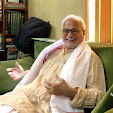I have just used the word “terrorist” in connection with the actions of Barin Ghose’s group. In 2010, no word in the English language elicits a more visceral reaction. To most of us, “terrorism” brings to mind the 9/11 tragedy, suicide bombers, and the targeting of innocent civilians. These associations, all legitimate, obscure the more precise meaning, or rather meanings, assigned to “terrorism” by social scientists and historians. Properly speaking, “terrorism” is the use of intimidation and terror to bring about political ends. Originally used for policies carried out by the French revolutionary government during the Reign of Terror, it came to be applied to any policy or mode of action meant to strike terror in those it is directed against.
Terrorism has passed through a number of phases since the time of the French Revolution. Roughly speaking one may distinguish a stage of revolutionary terrorism – which I subdivide into an anarchistic, an anticolonial and an insurrectionary phase – and a later stage that I call apocalyptic terrorism. The revolutionary period in its three forms extended from the late nineteenth century to the late twentieth century, and beyond. Anarchistic terrorists, who were active in Russia Western Europe from the 1870s until the first world war, sought the overthrow of nation-states. Anticolonial groups, such as the one Aurobindo was connected with, were active throughout the twentieth century in India Ireland Sri Lanka Israel
Unlike the three sorts of revolutionary terrorists, apocalyptic terror groups do not have a clear, attainable aim, such as the overthrow of a national regime. Rather they long to “bring down the system” or to wipe out the enemies of the true faith. Groups that fall into this category, such as AUM Shinrikyo and al-Qaeda, typically treat innocent civilians as stand-ins for unattainable governments. They can and do inflict enormous damage, but they are unlikely to attain their aims since these aims are cast in such apocalyptic terms as to be unattainable.
Few terrorists of any sort have ever applied the term “terrorist” to themselves. This brings us to the popular cliché, “One man’s terrorist is another man’s freedom fighter.” As with all clichés, there is a grain of truth in this saying, but it muddles useful distinctions. The question to ask members of a revolutionary group is not whether they want freedom, but whether their methods are realistic, effective, and avoid what is euphemistically referred to as “collateral damage.” By these measures, the revolutionaries with whom Aurobindo Ghose was associated were indeed freedom fighters, although some of their methods – attempts to assassinate British officials and collaborators, and the intimidation and robbing of rich and powerful Indians – could rightly be referred to as terrorist methods.
Aurobindo was not afraid to use the word terrorist, though one should keep in mind that the term did not then have the connotations that encumber it today: […]
The Bomb in Bengal: The Rise of Revolutionary Terrorism in India 1900-1910 Peter Heehs (Paperback - Aug 2005)
Peter Heehs (Paperback - Aug 2005)
Nationalism, Terrorism, Communalism: Essays in Modern Indian History (Oxford India Paperbacks) Peter Heehs (Paperback - Jul 2000)
Peter Heehs (Paperback - Jul 2000)
Netaji Subhas Confronted the Indian Ethos (1900-1921): Yogi Sri Aurobindo's " Terrorism " , Poet Tagore's " Universalism " , and Mahatma Gandhi's " Experimental Non-Violence " Adwaita P. Ganguly (Hardcover - Sep 5, 2003)
Terrorism in India, Shaileshwar Nath - 1980 - 350 pages
- 1980 - 350 pages
held in their articles in The Modern Review of the twenties that with the renaissance of Bengal began not only the renaissance of India but that of whole Asia. As early as 1908, Aurobindo pointed out through the columns of the Bande...
held in their articles in The Modern Review of the twenties that with the renaissance of Bengal began not only the renaissance of India but that of whole Asia. As early as 1908, Aurobindo pointed out through the columns of the Bande...
Bengal: change and continuity Ingrid Aall - 1971 - 270 pages
Calling for inner freedom, Aurobindo pointed to a new age which men should work towards. One means for reaching this pinnacle of human destiny which lay ahead was by yoga and the gathering of men's inner forces. ... 12:39 PM
Calling for inner freedom, Aurobindo pointed to a new age which men should work towards. One means for reaching this pinnacle of human destiny which lay ahead was by yoga and the gathering of men's inner forces. ... 12:39 PM

No comments:
Post a Comment